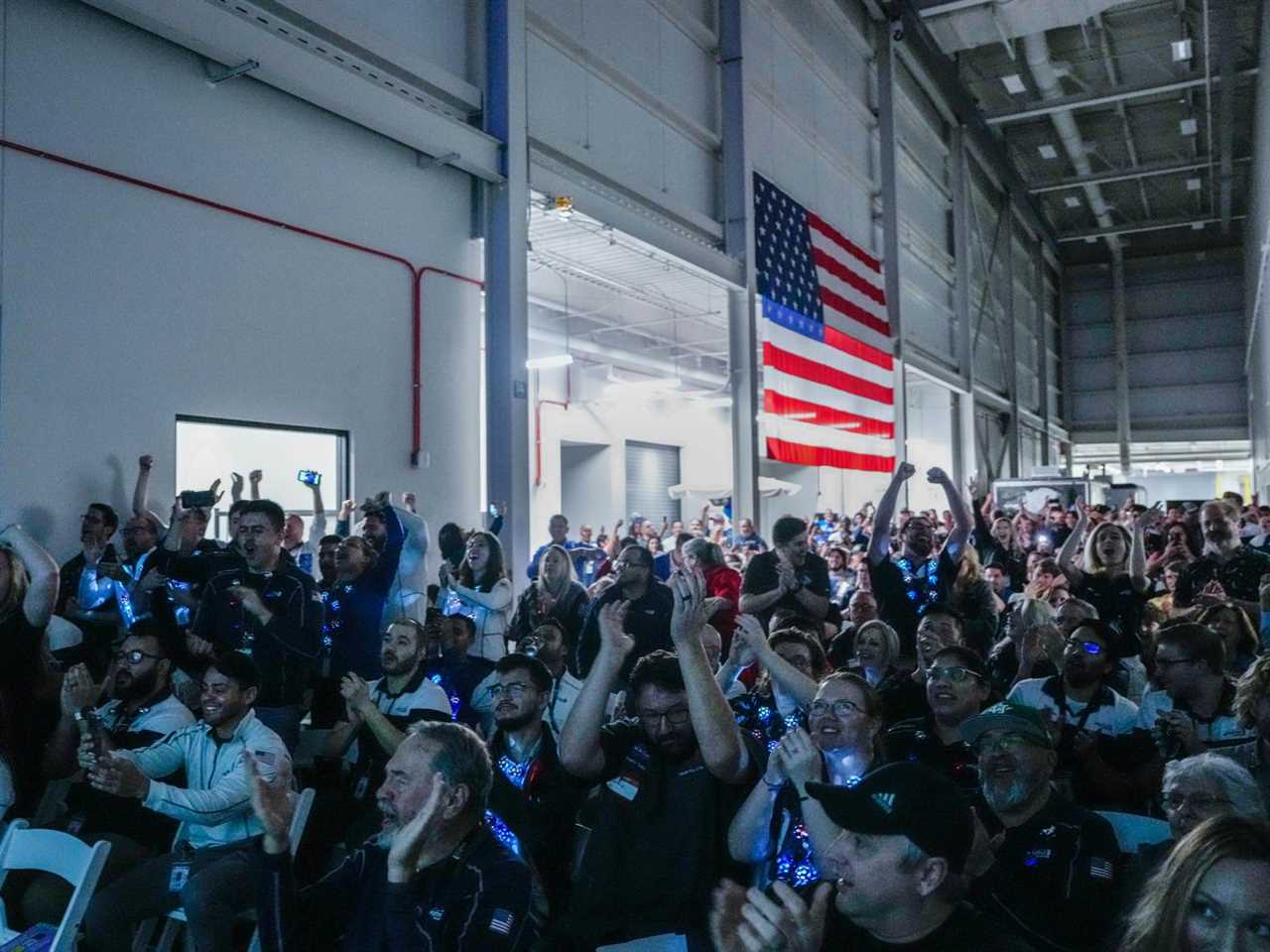
The groundbreaking development speaks to the growing role of private companies in space.
Houston, the US is officially back on the moon.
On Thursday, an unmanned lunar spacecraft called Odysseus made the first US moon landing in 50 years. The spacecraft, which was produced by Texas-based engineering firm Intuitive Machines, marks major progress in the country’s ongoing investments in space exploration and provides helpful new data that can be applied to upcoming lunar missions, and even trips to Mars.
Odysseus is also the first private spacecraft to ever land on the moon, underscoring how American businesses are taking a more prominent role in US space endeavors.
Their interest and involvement in space has meant the ability to test more technology more quickly, something that has been evident in SpaceX’s rocket launches, including repeated failed missions. Bolstered by government funding and a faster-moving experimental mentality, these companies are able to refine their offerings at a swifter pace than a government agency, which might often have to deal with more regulations and red tape.
“We’re seeing quite a large growth in the number of companies and private interests in the space business,” said Johns Hopkins University physics and astronomy professor Charles Bennett.
While private companies have long been key partners for NASA, Bennett said they’ve taken charge of more aspects of space exploration in recent years. SpaceX, for example, has become a key developer of rockets and intends to launch its own commercial missions. Additionally, the industry as a whole has seen a surge in growth and funding as more governments and consumers across the globe have become increasingly interested in space.
Odysseus’s successful journey will ultimately be useful to scientists as they prepare for NASA’s manned Artemis missions, set to travel around the moon in 2025 and land there in 2026. Those missions are dedicated to establishing a long-term US presence on the moon, with the goal of using that experience to inform later journeys to Mars.
The moon landing, explained
Odysseus, a robotic spacecraft, touched down in the region of the moon’s south pole on Thursday evening following a somewhat rocky descent. Intuitive Machines announced then on X that it was working to “downlink the first images from the lunar surface.” Notably, Odysseus is an autonomous spacecraft, which means it was able to land itself on the moon, a challenge that has foiled numerous past missions.
After troubleshooting communications, flight controllers have confirmed Odysseus is upright and starting to send data.
— Intuitive Machines (@Int_Machines) February 23, 2024
Right now, we are working to downlink the first images from the lunar surface.
Odysseus will stay on the moon for about one week before it’s expected to run out of power. As part of the trip, it brought six scientific experiments for NASA, including one designed to test navigation capabilities, and six commercial items, including a sculpture by artist Jeff Koons.
The vehicle is the first from the US to make this landing since Apollo 17 in 1972. More recently, China and Japan have also landed rovers on the moon.
This mission was made possible by NASA’s Commercial Lunar Payload Services program and is set to aid the agency’s broader Artemis initiative, which is focused on using research on the moon to inform future missions to Mars. For this project, Intuitive Machines received $118 million in funding from NASA to build the lunar lander and transport experiments.
A renewed focus on the moon is driven by both commercial and scientific interests, Bennett noted. For companies that are interested in space, there could be goals of mining minerals and other resources on the moon, he says. For scientists, it could be an opportunity to study the presence of water on the moon and how it could help fuel trips to Mars. (As ABC News Australia reported, frozen water at the moon’s south pole could be used to make fuel, a potentially helpful prospect for astronauts in the future.)
“It’s really exciting,” Geza Gyuk, the director of astronomy at the Adler Planetarium & Astronomy Museum, told CBS News. “It’s part of the Artemis Project, so this is sort of testing out the technologies necessary to deliver payloads to the moon.”
Additionally, these missions are taking place against an ongoing backdrop of geopolitical competition with entities including the Chinese government, which has seen three spacecraft land on the moon in the span of a decade. “It is a fact: we’re in a space race,” NASA Administrator Bill Nelson previously told Politico about the urgency behind the US establishing a presence on the moon.
What this means for space exploration
In addition to Intuitive Machines, several other companies, including Elon Musk’s SpaceX, Jeff Bezos’s Blue Origin, and Richard Branson’s Virgin Galactic, are working on tech and vehicles for taking the next steps in space.
Between 2013 and 2022, private equity firms poured $272 billion into more than 1,700 private space companies, according to a Deloitte report. And the industry is only expected to grow in the next decade.
For now, Bennett notes that the interests of private companies and the public sector have intersected, with companies helping NASA conduct scientific experiments. He said, however, that one day those could potentially conflict.
At this time, the moon landing has been touted by officials as a milestone for the current private endeavors as well as public ones. “Today, for the first time in the history of humanity, a commercial company, an American company, launched and led the voyage up there,” NASA Administrator Bill Nelson said in a video statement. “This feat is a giant leap forward for all of humanity.”
----------------------------------------
By: Li Zhou
Title: America’s first moon landing in 50 years, explained
Sourced From: www.vox.com/24081504/moon-landing-nasa-odysseus-intuitive-machines-artemis-mars
Published Date: Fri, 23 Feb 2024 23:15:18 +0000






